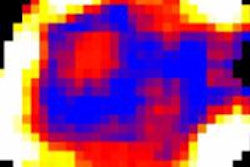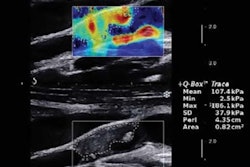German researchers are taking advantage of 7-tesla MRI scans to view glucose metabolism activity and thus identify solid or aggressively growing tumors.
The approach, developed at the German Cancer Research Center (DKFZ) in Heidelberg, combines ultrahigh-field MRI with a special method that reinforces the glucose signal to make it more distinct and selective. The imaging technique makes it possible to obtain enough signal strength to visualize changes in glucose levels in brain tissue after injection of a glucose solution.
The technique is based on the magnetization transfer effect, which has not been possible for glucose imaging in humans until now. In magnetization transfer, the signal from glucose protons is transferred to bodily water, which is measured with MRI.
In the study, physicist Patrick Schuenke and physician and physicist Dr. Daniel Paech observed changes in glucose signals in healthy brain regions and pathogenic changes in human brain cancer. Unlike PET, the glucose-MRI technique does not involve any radiation exposure for the patient.
The study was published June 16 online ahead of print in Radiology.



















